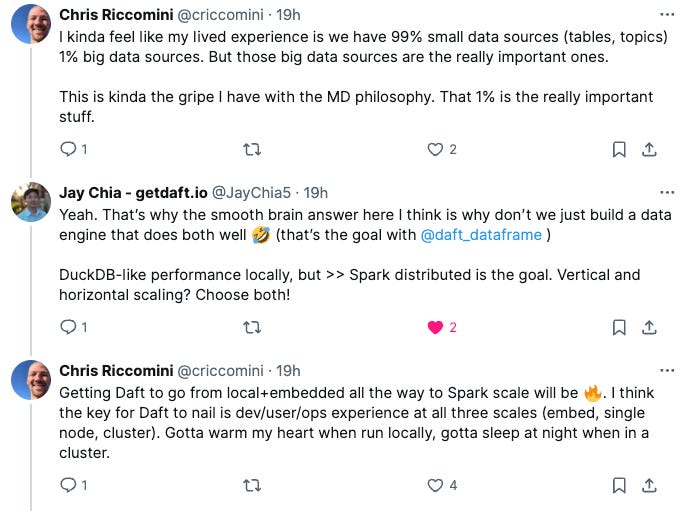The New Era of Flexible Infrastructure Deployment
Flexible deployment is now table stakes. Infrastructure must run embedded, client-side, single-node, clustered, as SaaS, BYOC, and self-hosted.
Confluent’s recent WarpStream﹩ acquisition came as a surprise to me. Why buy WarpStream four months after announcing Freight Clusters, a direct competitor to WarpStream? Confluent says WarpStream will enable bring your own cloud (BYOC) deployment for its customers.
I was a bit skeptical of Confluent’s messaging at first—acquisition motivation and communication are rarely the same. But I’m coming around to the idea. Freight can’t support BYOC deployment because it’s built on Kora, the proprietary system confluent built for its SaaS offering. Kora is not easily deployed in a customer’s environment, whereas WarpStream is.
Confluent can now offer self-hosted, BYOC, and cloud versions of their product. I suspect their customers were asking for BYOC, a trend I expect to increase (see Bring Your Own Cloud, Nuon﹩, and Hosted SaaS Challenges With Jon Morehouse). Confluent’s product offering is indicative of what customers want: flexible deployment options. There’s no one-size-fits-all deployment offering.
But Confluent is now running (and supporting) three different versions of Kafka: self-managed open-source Kafka, Confluent Cloud with Kora, and WarpStream. If Confluent were starting from scratch now, I don’t think they would have built things this way. While there’s no one-size-fits-all deployment offering, I suspect we can still build a single system that can accommodate flexible deployment. Doing so would provide a much better user (and vendor) experience.
ClickHouse is an example of such a system. I really didn’t understand why everyone was so excited about ClickHouse until I dug into it in my recent post, Unpacking the Buzz around ClickHouse. Then it clicked: you can run ClickHouse as a single node. In hindsight, it’s a comically obvious gap in the realtime online analytical processing (OLAP) space.
ClickHouse is more than a single-node binary, though. It can also be run in a cluster, or embedded as an in-process library with chDB. The company also offers a SaaS cloud, and BYOC deployment products. This is an incredible amount of flexibility for one system. It scales from a single in-process library all the way to a distributed cluster. And it can be deployed as a self-managed service, BYOC, or as SaaS. Its highly efficient single-node binary can also scale up nicely, too. This is the future.
Once this clicked, I started seeing the trend everywhere. PostgreSQL now has pglite.dev for client-side and edge deployment. Neon has added an object storage tier (granted, it’s a fork when I last checked). MotherDuck is trying to stretch DuckDB from analyst laptops to the cloud. Daft﹩’s next-generation query engine is going after not only Spark-scale workloads, but DuckDB as well.
There are many reasons for this shift. On the product side of the fence, we’re finally understanding what infrastructure customers want: flexible deployment. On the tech side, new trends such as zero-disk architecture, Rust and C++ adoption, composable data systems, and WebAssembly’s (Wasm) slow but continued growth have enabled us to actually build such systems.
Infrastructure vendors need to ask themselves: does our system deploy self-managed, BYOC, and as a SaaS cloud? Can we support in-process embedded, single-node, and clustered execution? If not, you’re cooked.
Book
Support this newsletter by purchasing The Missing README: A Guide for the New Software Engineer for yourself or gifting it to someone.
Disclaimer
I occasionally invest in infrastructure startups. Companies that I’ve invested in are marked with a ﹩ in this newsletter. See my LinkedIn profile for a complete list.




